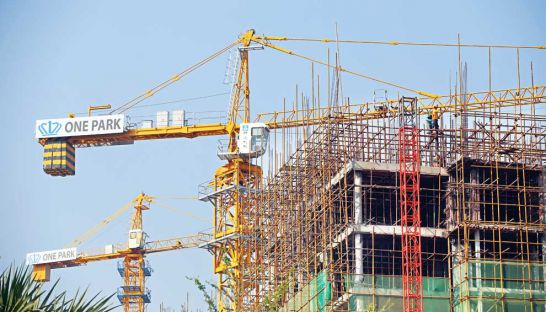No concrete solutions for cement shortage
No concrete solutions for cement shortage
Despite being home to several cement factories, real estate industry experts say Cambodia’s cement manufacturing sector has yet to fulfill demands of the fast developing building boom.

Housing Development Association of Cambodia president Ly Hour recently informed Post Property that despite a handful of operational cement factories in the Kingdom, supply of cement was falling slightly short of demand. According to Hour, his own borey that he is developing and other boreys he knows of have to rely on imported cement from neighboring countries to fill the gap in cement supply.
“The cement supply chain in Cambodia isn’t major by any means, even if the supply enjoys an increase, the amount is still inadequate,” he said.
He added, “Despite there being new factories that can produce cement, I still think that it’s not enough, because the demand for cement is shooting up very quickly due to our country’s rapid development.”
With investment in Cambodia’s booming construction industry having increased 43.3 percent in the first four months of 2017 compared to the same period last year, Hour expects demand for cement will continue to rise as the flourishing real estate and construction building boom flourishes.
Charles Vann, head of the Cambodia Constructors Association, expressed a similar view to Hour, believing cement supply was inadequate compared to demand as local production “can only support a small part of marked needs”.
Prak Sereyvathna, CEO of Kampot (K) Cement, a joint venture between the Khaou Chuly Group and Thai cement manufacturer SCG, said cement sales have been on the rise this year which has underpinned the company’s plans to invest an additional $1 million to open a new production line. The new line would produce 2,600 tonnes a day on top of the existing 5,000 tonne a day production output.
“We are currently doing market research before commissioning the new production chain,” Sereyvathna said, acknowledging local cement demand was on the up.
Chip Mong Insee Cement Corporation is another such firm capitalising on the increasing local demand for cement, with the company about to commission its new cement plant in Touk Meas, Kampot.
With a capital investment of $262 million, Chip Mong’s new manufacturing facility for its cement is expected to be Cambodia’s largest single line, and will help to alleviate the Kingdom’s dependency on imported cement products.
Meanwhile, Touch Samnang, deputy director of the Overseas Cambodia Investment Corporation (OCIC), said most of its projects use locally produced cement, except when it came to adhesive cement since this was not produced in Cambodia.
“OCIC’s demand for cement is measured at 20,000 to 30,000 tonnes each year and I believe that this demand will rise as Cambodia’s economy continues to improve and grow,” he said.













